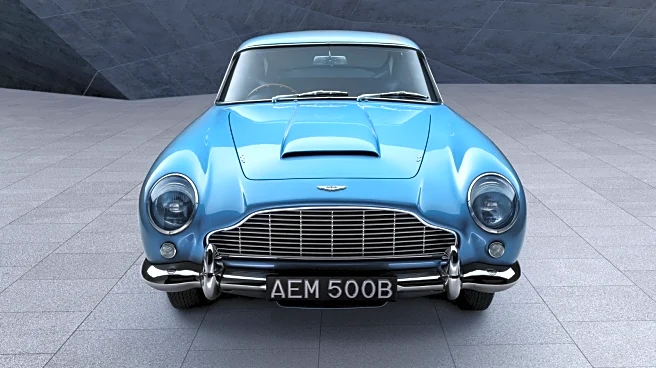
If you happen to catch a Formula 1 free practice session, you might see something that looks like a science experiment gone wrong. A team will wheel out its scrupulously tuned, wind tunnel-honed race car — an engineering marvel — only for a mechanic to brush bright green paint across the front wing like it's a kindergarten art project. No, McLaren hasn't partnered with Nickelodeon this year. It's called flow-vis, and in a sport obsessed with shaving off thousandths of a second, it's one of the most
brutally honest tools in the entire paddock.
Flow-vis, short for "flow visualization," is exactly what it sounds like: A fluorescent dye mixed with a light oil, brushed onto the car to show how air actually moves across the bodywork. As the driver blasts down the track, the paint smears in the direction of the airflow, making what is essentially an aerodynamic fingerprint. For engineers, it's like getting to read the air's diary. When what they see doesn't match what the computer promised? That's when the panic — or at least expectation setting — starts. It's a beautiful paradigm, and teams will spend millions of dollars on wind tunnel enhancements. It's like designing a Swiss watch, then checking the time with a sundial.
Read more: These Supercars Lose Value So Quickly, They're Almost A Steal
Air Don't Lie

Basketball has "ball don't lie" — Formula 1 should have "air don't lie." In F1, the airflow around a car is everything. Teams throw supercomputers running simulations at the problem, and their wind tunnels are closer to Bond villain lairs. But here's the kicker: even with all that tech, the real world remains inconveniently, well, real.
Instead of trusting the matrix, engineers go analog and bust out the flow-vis. This stuff is gloriously low-tech. Mechanics brush it onto specific parts of the car and send it out for a few laps. As the car cuts through the air, the airflow shears the goo across the bodywork, tracing little lines of aerodynamic truth. Aerodynamic truth serum — who knew?
When it works right? Smooth, tidy streaks. That's clean flow, which is exactly what you want. When it goes bad? Chaotic swirls and blotches — air is being unpredictable, which can murder downforce and throw your lap time in a woodchipper. To use BMW art cars as a comparison, more Jeff Koons and less Andy Warhol.
The Aerodynamicist's Rosetta Stone
So why is the low-tech solution still in heavy rotation in the most advanced racing series on Earth? Blame the rules. Formula 1 has strict limits on how much time teams can spend in wind tunnels and running computational fluid dynamics (CFD) simulations. The more successful your team, the less you're allowed to test either.
These days, every second in the tunnel, and every CFD cycle, is more valuable than whatever meme stock is hot this week. No one wants to find out their expensive new intake design is trash after they've burned through half their test time. Flow-vis is cheap, quick, and brutally honest. It also tells engineers whether their fancy virtual models are full of crap before they sink millions into developing further with them. In a sport where the difference between pole and P18 can come down to less than two seconds in qualifying, sometimes the smartest move is letting the car wear its secrets in streaks of high-visibility shame.
Want more like this? Join the Jalopnik newsletter to get the latest auto news sent straight to your inbox...
Read the original article on Jalopnik.












